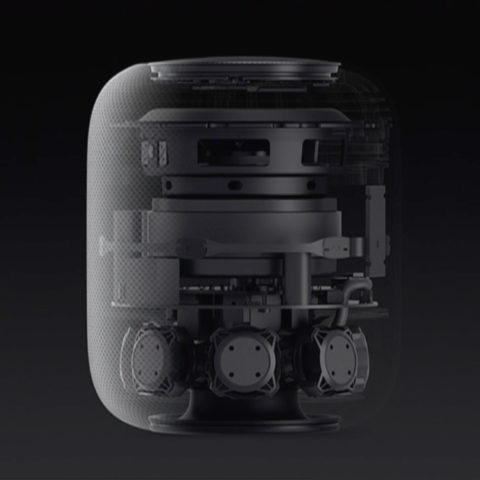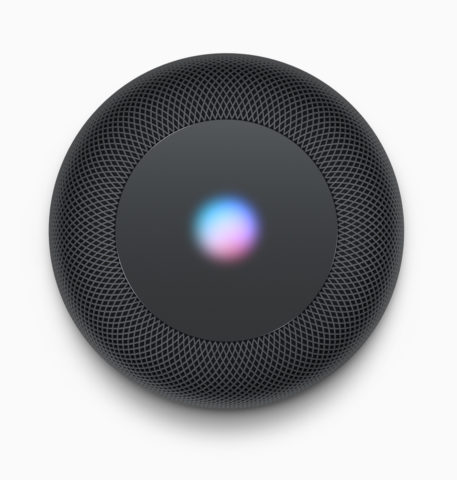Apple wants to dominate your home life by reinventing music
This year’s WWDC keynote was a fruitful one, with a huge number of announcements. Perhaps the most exciting, though, was a sneak peek of a brand new product line from Apple called HomePod. It’s a smart speaker, due later this year, that’s designed to shake up a market currently dominated by the Amazon Echo. Apple says it wants to “reinvent home music” in the same way that the original iPod reinvented portable music.
The speaker is a combined high-quality speaker and Siri-powered assistant, hoping to fill in the gaps in perhaps the only aspect of your daily life that Apple doesn’t already occupy. You already have your iPhone with you all day, why not let Siri come live in your home too? The HomePod is just under 7 inches tall and covered in a 3D mesh fabric. That’s small and slick enough to look good anywhere in the home.
Apple introduced the new device by saying that some companies like Sonos strive for amazing audio quality, while others like Amazon focus on voice control and intelligence. Why can’t somebody do a good job of both? The HomePod is designed as a combination of these things, and on stage we saw how it was designed with three key abilities in mind.
Rock the house
Amazing sound quality was assured with a lot of fancy audio buzzwords like “precision acoustic horns,” “directional control,” and our favorite: “beam-forming tweeter array.” In terms that non-audiophiles might understand, the HomePod rocks seven tweeters for the high frequencies and a 4-inch woofer for the lows. Automatic bass equalization and dynamic modeling means that there’s no distortion, regardless of the volume.
Spatial awareness
The HomePod can “intelligently and automatically” detect the space it’s in. It should know whether it’s in the corner of a small room or the centre of a large one, and adjust its output accordingly. This should ensure that no matter where you put the little device, it will sound like its filling the room. This technology is powered by the same A8 chip seen in previous generation iPhones, which also handles the dynamic equalization and intelligence capabilities.
Musicologist
The HomePod works with Apple Music and Siri to become a real music expert, able to answer complex queries about songs and play from a library of 40 million tracks. You’ll need an Apple Music subscription, of course, to get the full benefits. Talking to the built-in assistant is a big part of the device, with an array of 6 microphones listening out for that familiar launch phrase, “Hey Siri.” It can hear you even from across the room, while loud music is playing. And beyond music, this being Siri means it can also link up to a ton of other services to become a real all-round home assistant: News, Messages, Reminders, Podcasts, Weather, Sports and more. Of course, it will also work with HomeKit for controlling your smart gadgets and lights.
Pricing and availability
Apple’s pricing logic is that a good quality WiFi speaker might set you back up to $500, while competing smart speakers normally cost up to $200. Add those figures together and it’s “not unreasonable” to assume the HomePod could cost up to $700. In fact, it will cost half that – $349.
Though this creative counting makes it sound like a bargain, it’s still a bold move to price itself well above the Amazon Echo ($180) and Google Home ($130) smart speakers. Looks like Apple is really selling itself as a premium device in this market that could blow away those other devices with its sound quality and intelligent features.
It comes in white and space grey, and will launch this December in the US, UK, and Australia. A full international release is to follow in 2018, but there’s no word on international pricing just yet. HomePod looks promising, and we’ll be sure to update you with more closer to its release date!
Missed anything else from WWDC? Read our quick recap of all the key announcements from the event.





